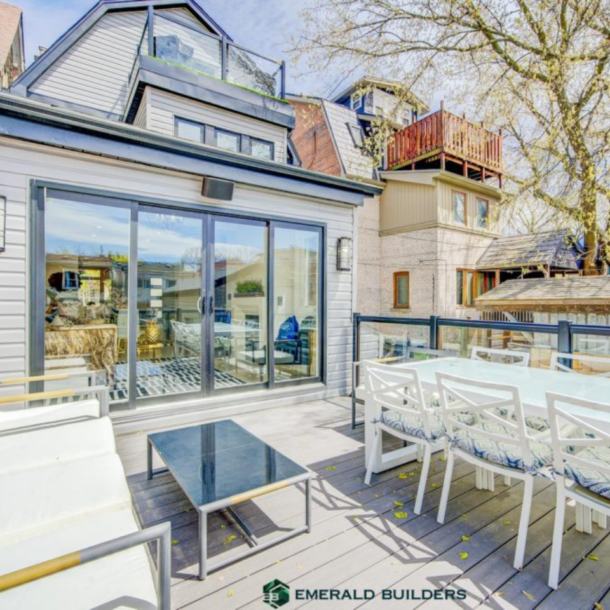
Garden Suites: Affordable Housing Solutions in the Face of the Housing Crisis
Garden Suites: Affordable Housing Solutions in the Face of the Housing Crisis
Are you aware, my friends, that we are living in peculiar times? Times where homeownership seems like an unattainable dream for many individuals. It’s a time when the so-called “housing crisis” dominates the headlines on a daily basis, and affordability remains elusive no matter how hard we work.
What if, indeed, the solution to our housing predicament lies right within our reach, almost within our own backyards?
Let’s delve into the current state of the Canadian housing market, which is experiencing significant strain. The rising cost of homeownership has become increasingly burdensome for many Canadians. With soaring real estate prices and limited wage growth, a considerable number of individuals are struggling to find affordable housing options.
This situation is particularly concerning for seniors on fixed incomes, who face the possibility of being unable to afford suitable housing.
In light of these challenges, innovative housing solutions like garden suites are being recognized as a potential answer. Garden suites offer an affordable alternative that can help alleviate the strain of the housing crisis and provide much-needed housing options for individuals and families.
Now, imagine this: a homeowner makes the decision to construct a garden suite on their existing property. They may do so to accommodate aging parents, generate rental income, or provide a living space for a young adult child. At first glance, it appears to create a win-win scenario for both homeowners and renters alike.
However, let’s broaden our perspective even further in this case. Each additional garden suite represents an opportunity to improve lives and provide a secure roof over the heads of those who are struggling the most. As the supply of affordable housing increases, even in incremental ways, the pressures begin to ease. What may currently seem impossible in terms of affordability, stability, and community gradually becomes closer to reality.
The presence of garden suites enables young professionals to remain in their hometowns, rather than being compelled to relocate to more affordable cities. Inter-generational living, which fosters a sense of connection and support, regains prominence. Neighborhoods come alive with the vibrant energy of diverse livelihoods coexisting under one roof.
Through the act of sharing space, we also share lives. Previously anonymous neighbors now weave a fabric of mutual aid and camaraderie, strengthening the very essence of our communities. Today, diversity contributes to the richness of society, promoting harmony rather than conflict. It forms a mosaic of voices and visions, all striving towards a common goal: ensuring a decent home for every individual who calls this place their own.
The scale of the problem can often appear overwhelming, but it’s important to remember that change starts with a single small step.
And yet, obstacles always remain.
We’ve created a system that works against itself, building obstacles where opportunities should flourish. Zoning codes were written for a time before garden suites were even conceived. Opposition to innovative ideas often stems from misunderstandings and a reluctance to embrace anything new.
The presence of excessive bureaucracy and additional expenses significantly drives up the cost of constructing backyard dwellings. We’ve organized our neighborhoods in such a way that these common-sense solutions, for all their potential benefits, remain frustratingly out of reach. But what if we used our imagination to re-envision the possible?
Zoning rewritten with a resounding “Yes!” to garden suites by default.
The backyard revolution is upon us! This is our wonderful opportunity to change the way we think about housing and to create a more affordable and sustainable future for our communities.
But how do we make it happen?
We start by removing the barriers that are holding us back, waiving the fees that make it so expensive to build accessory dwelling units (ADUs) and developing communication strategies that build buy-in from our neighbors. We create design guidelines that ensure that ADUs integrate seamlessly into our communities. And we provide stimulus programs that help this backyard revolution scale to meet our needs.
Removing obstacles is not enough; we also need to alter our perception of ADUs. They should be seen as opportunities, not threats. It is important to realize that ADUs can aid in the development of more affluent neighborhoods, provide more affordable housing, reduce carbon impact, and create better communities, as mentioned earlier. By embracing this perspective, we can fully understand the potential benefits of ADUs and their positive impact on various aspects of housing and community development.
By opening our minds and engaging in honest conversations that dispel misconceptions, we can uncover surprisingly simple solutions! This approach leads to the creation of rules and regulations that embrace inclusivity rather than exclusion.
Thoughtful placement and styling that maintain neighborhood character and support that transitions a handful of projects into a housing movement; the opportunities burst from every garden suite; if only we would let them flourish!
Realizing this new vision necessitates deep creativity, political determination, and a collective sense of civic responsibility. We must shift our perspective on the role of housing within the fabric of our society. It is crucial to recognize the transformative potential of the humble backyard dwelling, which has the power to bridge gaps between social classes and generations, fostering unity and understanding.
We must transcend the notion of being isolated homeowners and instead embrace our roles as caretakers of our shared neighborhoods. By coming together as a community, we can collaboratively address local challenges and find neighborly solutions. This collective approach fosters a sense of unity, enabling us to create a stronger and more harmonious living environment for all.
Undeniably, whenever there is progress and pleasure, there will also be obstacles and dissenting voices. However, the urgency of the housing crisis compels us to explore new approaches. It is crucial that we embrace this window of opportunity that lies beyond our own gates and barriers. As we build, we must remember that our efforts extend not only to ourselves but to one another. By working together and thinking beyond our individual needs, we can create a better future for all.
Let us embrace our creativity and liberate our hands and imaginations to envision a multitude of garden suites. By attentively listening to each other’s needs and collaboratively developing solutions, we can collectively address the challenges at hand. Above all, let us remember that our shared aspiration is to have a place we can genuinely call home, regardless of its simplicity.
The housing crisis tests our ingenuity, empathy, and collective will. But remember that hidden within its hardship lies a chrysalis of possibility; all we need to do is tend the garden that awaits in our own backyards, as the future of affordable housing depends on it.
Quick links
Head Office and Design Center
Operating Hours
Monday to Friday : 9AM – 6PM
Saturday : 10AM – 5PM
Sunday : By appointment only


